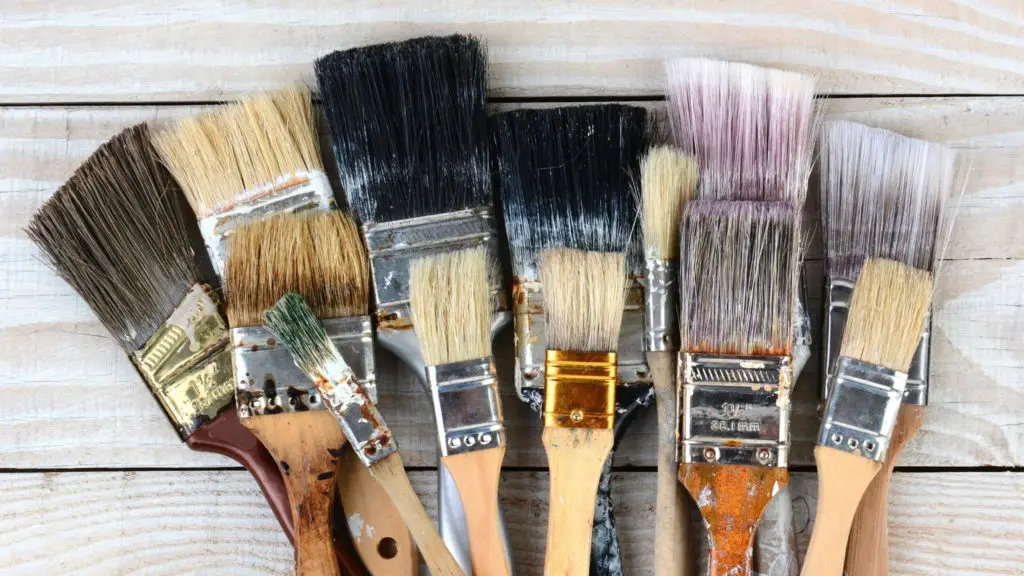A brush is a tool with bristles, wire or other filaments, used for cleaning, grooming hair, make up, painting, surface finishing and for many other purposes. It is one of the most basic and versatile tools known to mankind, and the average household may contain several dozen varieties. It generally consists of a handle or block to which filaments are affixed either parallel- or perpendicular-wise, depending on the way the brush is to be gripped during use. The material of both the block and bristles or filaments is chosen to withstand hazards of its application, such as corrosive chemicals, heat or abrasion.
Paint brushes

A paint brush and next to a brush you have tools to put down a good end result.
For a good result you also need good tools to get a nice end result for your painting work, both outside and inside painting.
You need it for the treatment of wood types and walls.
A few brushes and only 2 rollers are enough.
In addition, good tools are also indispensable.
A tassel, size 10 and 14
For the paintwork I use a nice round brush size 10 and 14.
I use size 10 to paint glazing beads and sides.
Size 14 is especially suitable for window frames.
Also read the article about painting.
I use a brush with black hair, rope toss and a varnished wooden handle.
In addition to a brush, I use a paint roller for larger surfaces such as buoy parts, wind fenders and doors.
These paint rollers have such a fine structure these days that you no longer see an orange effect.
You can also use the same sizes for water-based paint brushes, but this material is very different.
This material consists of synthetic fibers.
The advantage of these brushes is that you can rinse them with water after use and store them dry.
Read more about synthetic brushes here.
For pickling, a flat brush is the best choice.
These hairs are double thick and especially suitable for this.
Also money: the larger the wood parts, the larger the brush.
Anti-splash wall rollers for smooth walls
There are also many types of wall rollers here.
You can no longer see the trees for the forest.
They come in different sizes.
What is important is that you know which roller to use.
By that I mean which one for which surface.
For smooth and slightly textured surfaces I recommend microfibre wall paint roller.
Anti-spatter and high paint absorption!
You will get a smooth end result with this.
For structured walls facade wall roller
It is best to use a wall roller for walls that have a structure.
This has a flexible inner core for very walls with a large coarse structure.
In addition, this roller has a high paint absorption.
The roller is suitable for all wall paints.
In addition to a paint roller, you can also use a block whitener.
Do you have another suggestion?
Or do you have another question?
I would love it if you leave a nice comment!
Thanks in advance.
Piet de Vries
Relevant topics
Synthetic brushes how do I use these
Painting techniques, roller and brush technique
Storing brushes for short and longer periods of time
Cleaning brushes with care products
Brushes in the paint shop of Schilderpret.nl
Painting without masking with the Linomat brush
I'm Joost Nusselder, the founder of Tools Doctor, content marketer, and dad. I love trying out new equipment, and together with my team I've been creating in-depth blog articles since 2016 to help loyal readers with tools & crafting tips.
